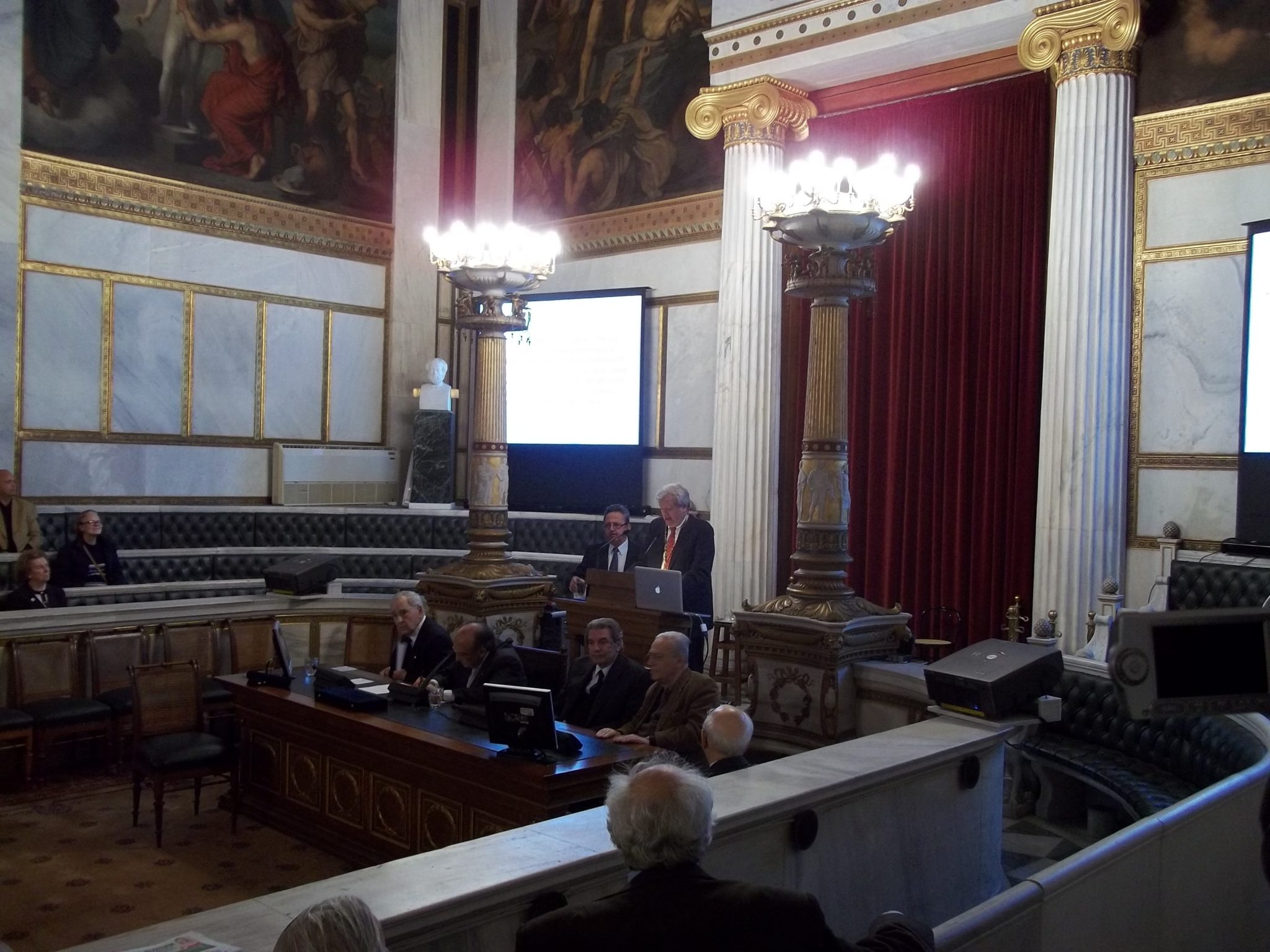
§1. In the first millennium BCE, which is the era when alphabetic writing was developed by Greek-speaking people, starting in the eighth century BCE, there is evidence for a wide range of dialects, which can be divided roughly into four groups: (1) Arcado-Cypriote, (2) Aeolic, (3) Ionic, and (4) Doric or “West Greek.” But my focus here is on an earlier time, the late second millennium BCE. There is evidence for the existence of these same four dialectal divisions even in this earlier time. The primary evidence can be found in the texts of clay tablets written in the so-called Linear B script. These tablets have been found by archaeologists mainly at the following ancient sites:
- on the island of Crete: (a) Knossos
- on the Helladic mainland: (b) Mycenae, (c) Tiryns, (d) Thebes, (e) Pylos.
§12. In what follows, I will be working with three kinds of linguistic evidence:
§28. From what we have seen up to now, I conclude that the prehistoric phases of Arcado-Cypriote, Aeolic, Ionic, and Doric were already differentiated in the late second millennium BCE, and that the dialect that comes closest to being identical with the standard “Mycenaean” language is the {89|90} ancestral Arcado-Cypriote. Still, it is unnecessary to posit complete identity, as Leonard Palmer points out:
§34. Especially important is the testimony of the Alexandrian lexicographical tradition as represented by a compendium known as the γλῶσσαι κατὰ πόλεις / glôssai katà póleis (on which see Latte 1924). As we see from this compendium, the aim of its compilers was to find residual epichoric attestations of poetic words long obsolescent in the general Greek-speaking world. For example, the Greeks of Clitor (Kleitorioi) in Arcadia were credited with the active usage of the following Homeric words that were no longer used in the living language of most other Greeks:
αὐδή· φωνή / audḗ = phōnḗ (‘voice’)
δέδορκεν· ὁρᾷ / dédorken = horâi (‘sees’)
ἔνεροι· vεκρoí / éneroi = nekroí (‘corpses’)
ἐσθλόν· ἀγαθόν / esthlón = agathón (‘worthy’)
λεύσει· ὁρᾷ / leúsei = horâi (‘sees’)
πάροιθεν· ἔμπροσθεν / pároithen = émprosthen (‘in front’)
χηλός· κιβωτός / khēlós = kibōtós (‘coffer’)
ὦκα· ταχέως / ôka = takhéōs (‘quickly’)
ὠλέναι· βραχίονες / ōlénai = brakhíones (‘arms’)
§36. On the phonological level as well, it is possible to find traces of a “Mycenaean” phase in Homeric poetry. I am about to show two Homeric {92|93} words that show such traces, coming from a dialectal phase that I described earlier as standard Mycenaean, examples of which survive only sporadically into the alphabetic era. The examples shown by Risch, as we have seen, are the words ἵππος/híppos and ἁρμόττω/harmóttō, which survive even in the everyday usage of the classical era, not only in epic. [25] The examples that I am about to show, on the other hand, survive only in epic. My examples are two Homeric words shaped by the same phonological rule that results in a form such as ἵππος/híppos. As we have seen, the rule is to be formulated as follows: e is raised to i next to a bilabial. Here are the examples:
Bibliography
———. 2023.08.19, present version of an archived essay dating from 2020.11.03. “Greek dialects in the late second millennium BCE.” Classical Continuum. https://continuum.fas.harvard.edu/observations-on-greek-dialects-in-the-late-second-millennium-bce-2/. Pamphlet 1 in the series EPOPS-NAF.
———. 2023.08.20, new version of an archived essay dating from 2015.07.22. “East of the Achaeans: Making up for a missed opportunity while reading Hittite texts.” Classical Continuum. https://continuum.fas.harvard.edu/east-of-the-achaeans-making-up-for-a-missed-opportunity-while-reading-hittite-texts-2/. Pamphlet 2 in the series EPOPS-NAF
———. 2023.08.21, new version of Greek: An Updating of a Survey of Recent Work, second edition. Classical Continuum. https://continuum.fas.harvard.edu/greek-an-updating-of-a-survey-of-recent-work-second-edition/.
———. 2023.08.22, new version of an archived essay, originally published as Nagy, G. 2011. “The Aeolic Component of Homeric Diction.” Proceedings of the 22nd Annual UCLA Indo-European Conference, ed. S. W. Jamison, H. C. Melchert, and B. Vine, 133–179. Bremen. Classical Continuum. https://continuum.fas.harvard.edu/the-aeolic-component-of-homeric-diction/. Pamphlet 3 in the series EPOPS-NAF
———. 2023.09.04. “Greek myths about invasions and migrations during the so-called Dark Age.” Classical Continuum. https://continuum.fas.harvard.edu/greek-myths-about-invasions-and-migrations-during-the-so-called-dark-age/. Pamphlet 4 in the series EPOPS-NAF.
———. 2023.09.07. “Yet another look at a possible Mycenaean reflex in Homer: phorēnai.” Classical Continuum. https://continuum.fas.harvard.edu/yet-another-look-at-a-possible-mycenaean-reflex-in-homer-phorenai/. Pamphlet 5 in the series EPOPS-NAF.
———. 2023.09.10, new version, “A ritualized rethinking of what it meant to be ‘European’ for ancient Greeks of the post-heroic age: evidence from the Heroikos of Philostratus.” Classical Continuum. https://continuum.fas.harvard.edu/a-ritualized-rethinkingof-what-it-meant-to-be-european-for-ancient-greeks-of-the-post-heroic-age-evidence-from-the-heroikos-of-philostratus/. Pamphlet 6 in the series EPOPS-NAF. This version replaces the online version Nagy 2020.11.03 and the printed version Nagy 2019/2020.
———. 2023.09.13, present version of “Signs of Hero Cult in Homeric Poetry.” Classical Continuum. https://continuum.fas.harvard.edu/signs-of-hero-cult-in-homeric-poetry/. Pamphlet 7 in the series EPOPS-NAF. This version replaces the online version Nagy 2020.11.02 and the printed version Nagy 2012.